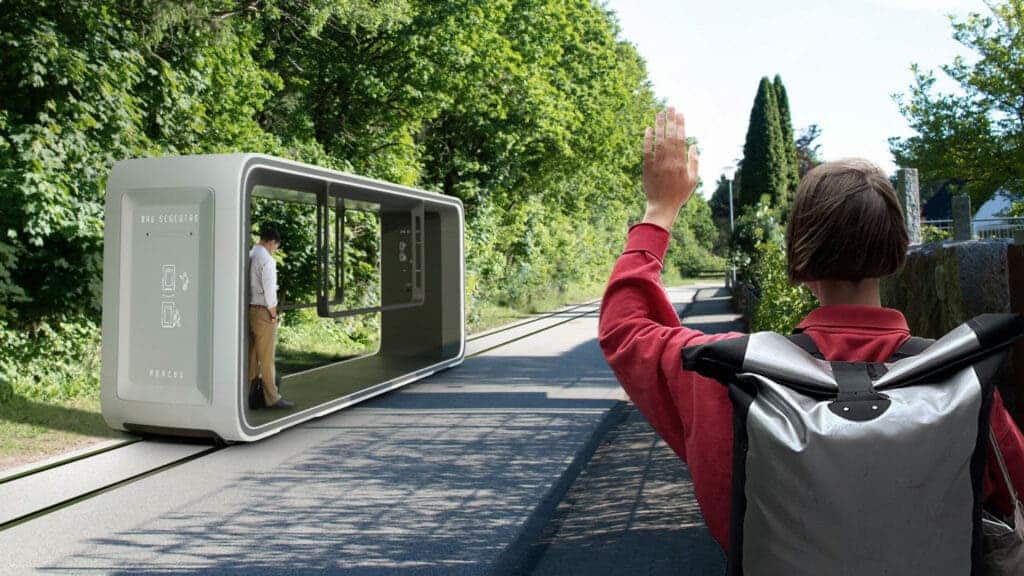Long before electric cars and buses were a thing, the humble tram was a way of using electricity to get around in the city. Taking the tram is still one of the most sustainable and efficient ways you can travel in urban areas, but, at least sometimes, the tram can feel a bit dated. Well, not anymore — these guys have an idea of reinvigorating the tram and bringing new life into it.

The architecture magazine Dezeen published some of the finalists for their Future Mobility Competition, and one of the proposals came from Lea Haats, Erik Mantz-Hansen, and Konstantin Wolf, who envision a new type of electric tram that runs on repurposed railway routes.
Called Abacus, the tram is driverless and works on a hop-on hop-off system where you just wave your hand and the tram stops — the system is equipped with onboard cameras that recognize such movements. The low floor enables passengers to easily get on and off the train, while a retractable ramp can be used for wheelchair users. The tram is fully electric and would be powered via existing rail tracks, to eliminate the need for a large, heavy battery. There are also handrails to hold on to or lean on, and large windows.
Abacus is mostly aimed at commuting or traveling between urban and rural areas. It’s aimed especially at Germany, where there are a lot of abandoned railways that could be repurposed for the tram — but the same idea could be applied in other areas. As urban centers become more crowded, people are increasingly coming in from farther away, including from the rural areas around the city. This contributes significantly to traffic jams, and it’s exactly the type of problem you could address through public transit.

“A large part of urban traffic is not caused by inner-city routes but is generated from further away. In rural areas, it seems to be very difficult to offer a mobility solution that is more attractive than the private car,” Abacus’ designers say. “But in the long term, the number of these inefficient vehicles must be reduced in order to decrease traffic, save space, and achieve the goals of climate protection.”
“The total length of Germany’s streets excessively outnumbers the usable infrastructure of railroads. In the last 100 years, more than half of all rail lines in northern Germany alone have disappeared or been discontinued. The revitalization of [these] tracks has a high potential, not only to reduce traffic and emissions but also to rebuild a bridge between the city and countryside.
For the developers, it’s important that Abacus be flexible and reliable enough to rival the comfort of a private car. The goal would be to start on small routes where any point on the route can be reached within minutes.
So, what do you think? Is this type of project a pipe dream or could it realistically make a difference?


